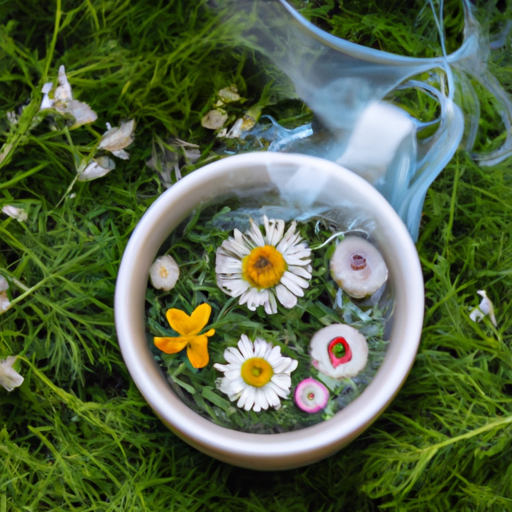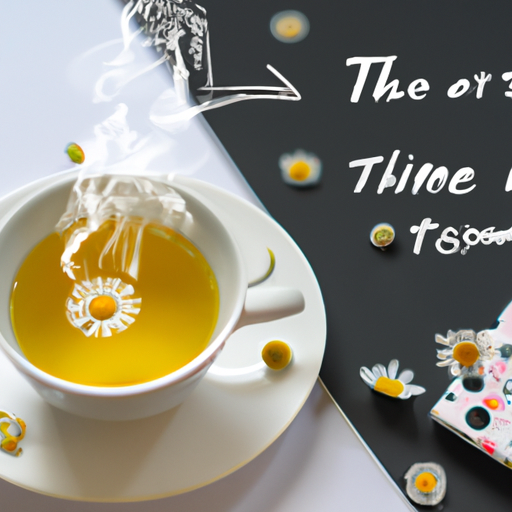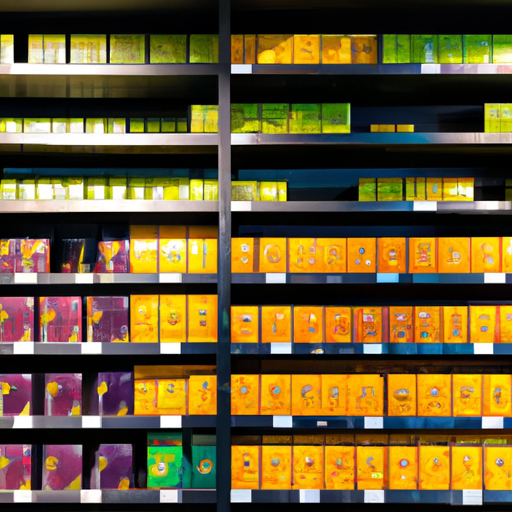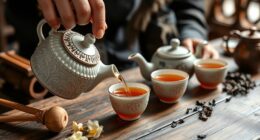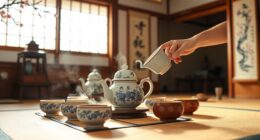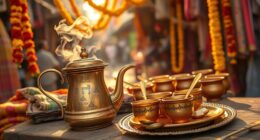Have you ever thought about whether the herbal tea you’re enjoying is authentic tea? Get ready to broaden your palate. As a tea lover, I’ve explored the realm of tea and uncovered an intriguing fact – herbal teas are not technically considered real tea.
Yes, you heard me right. While they may share the same comforting warmth and soothing aroma, herbal teas are a whole different ball game. So, what makes them so distinct? Join me on a journey as we uncover the secrets behind real tea and why herbal teas simply don’t make the cut.
From the origins and production methods to the health benefits and composition, we’ll explore the key differences that set these two brews apart. So, grab your favorite mug and immerse yourself in the delightful world of tea, where the rules are as diverse as the flavors themselves.
Key Takeaways
- Herbal teas are made from a variety of herbs, flowers, fruits, and spices, while real tea refers to the leaves of the Camellia sinensis plant.
- Real tea holds cultural significance and is a symbol of hospitality, respect, and harmony, while herbal teas do not have the same cultural significance.
- Real tea is cultivated in specific climates and soil conditions, whereas herbal teas can be made from a wide range of ingredients.
- Real tea is packed with antioxidants and offers potential health benefits, while herbal teas are often consumed for their taste and potential soothing properties.
The Definition of Real Tea
So, you’re probably wondering what exactly qualifies as ‘real tea.’ Well, let me enlighten you.
Real tea refers to the leaves of the Camellia sinensis plant, which undergo various processing methods to create different types of tea. This definition excludes herbal teas because they’re not derived from the Camellia sinensis plant.
Real tea holds immense cultural significance in many countries around the world. From the elaborate tea ceremonies in Japan to the traditional tea rituals in China, real tea plays a central role in these cultural practices. It’s not just a beverage; it’s a symbol of hospitality, respect, and harmony.
The origins and production of real tea are fascinating. The process begins with the careful cultivation of the Camellia sinensis plant, which requires specific climates and soil conditions. The leaves are then harvested, with different types of tea requiring different plucking techniques.
After harvesting, the leaves undergo various processing methods such as withering, rolling, oxidation, and drying. These steps are crucial in determining the flavor, aroma, and characteristics of each tea variety.
Now that you understand the cultural significance and production of real tea, let’s delve into why herbal teas don’t fall under this category.
The Origin and Production of Real Tea
Furthermore, exploring the origin and production of traditional teas reveals the truth behind their authenticity. Real tea, also known as Camellia sinensis, has a rich history of cultivation dating back thousands of years. It all began in ancient China, where tea was discovered and subsequently spread to other parts of Asia. The history of tea cultivation is intertwined with the cultural significance of tea ceremonies, which have been an integral part of many societies for centuries.
To better understand the origin and production of real tea, let’s take a closer look using a table:
| Aspect of Origin and Production | Description |
|---|---|
| History of Tea Cultivation | Tea cultivation originated in ancient China and gradually spread to other regions. |
| Cultural Significance | Tea ceremonies have been practiced for centuries, representing hospitality, respect, and tranquility. |
| Growing Conditions | Tea plants thrive in specific climates, such as high altitudes and subtropical regions. |
| Harvesting and Processing | The leaves are carefully hand-picked and undergo various processing methods, including withering, rolling, oxidation, and drying. |
| Types of Real Tea | There are several types of real tea, including green, black, oolong, and white tea, each with its unique characteristics. |
Understanding the history, cultural significance, and production process of real tea highlights its authenticity. Moving forward, let’s delve into the different types of real tea.
Overall, delving into the origin and production of real tea sheds light on its authenticity and cultural significance.
The Types of Real Tea
To truly appreciate the world of tea, let’s explore the various types available and discover the unique flavors and characteristics they offer.
When it comes to herbal teas, there is an abundance of options to choose from. These teas aren’t technically considered ‘real’ tea because they don’t come from the Camellia sinensis plant, which is the source of true tea. However, they’re still beloved by many for their delightful taste and various health benefits.
One of the most popular types of herbal tea is chamomile. Known for its calming properties, chamomile tea has a soothing and floral taste.
Peppermint tea, on the other hand, has a refreshing and minty flavor that can help alleviate digestive issues.
For those looking for a caffeine-free alternative, rooibos tea is a great choice. It has a naturally sweet taste and is often enjoyed with honey or milk.
Each type of herbal tea offers a unique taste and aroma, allowing tea enthusiasts to explore a wide range of flavors.
From the earthy and slightly bitter taste of green tea to the robust and malty flavor of black tea, there’s something for everyone to enjoy.
As we delve into the health benefits of real tea, it’s important to understand the distinction between herbal teas and true tea.
The Health Benefits of Real Tea
Indulging in a cup of true tea can positively impact your well-being by boosting your body’s defenses and promoting relaxation.
Tea has been cultivated for thousands of years, with its origins traced back to ancient China. The history of tea cultivation is rich and fascinating, with tea playing a significant role in various cultures around the world. In many countries, tea ceremonies hold great cultural significance, symbolizing hospitality, respect, and harmony.
When it comes to the health benefits of real tea, the list is impressive. Here are four key benefits that’ll make you want to reach for a cup:
- Antioxidant Powerhouse: Real tea is packed with antioxidants that can help fight free radicals in the body, reducing the risk of chronic diseases like heart disease and certain types of cancer.
- Stress Relief: The ritual of brewing and savoring a cup of tea can have a calming effect on the mind and body, promoting relaxation and reducing stress levels.
- Improved Digestion: Real tea contains compounds that can aid digestion, reducing bloating and discomfort after meals.
- Enhanced Immunity: The polyphenols found in tea can strengthen the immune system, helping your body defend against infections and illnesses.
As we delve into the composition of herbal teas, we’ll discover why they differ from real tea in terms of ingredients and preparation methods.
The Composition of Herbal Teas
Let’s explore the fascinating composition of these aromatic and flavorful brews that offer a unique and enticing alternative to traditional tea. Herbal teas, also known as tisanes, are not technically classified as tea because they do not come from the Camellia sinensis plant. Instead, they are made from a variety of herbs, flowers, fruits, and spices, resulting in a wide range of tastes and aromas.
The composition of herbal teas can vary greatly depending on the ingredients used. To give you a better understanding, here is a table showcasing some common herbal tea ingredients and their flavors:
| Ingredient | Flavor |
|---|---|
| Chamomile | Floral, earthy |
| Peppermint | Refreshing, minty |
| Rooibos | Sweet, nutty |
| Hibiscus | Tangy, fruity |
| Ginger | Spicy, warming |
Herbal teas have gained popularity not only for their taste but also for their potential health benefits. They are often consumed for their soothing and calming properties, as well as their potential antioxidant and anti-inflammatory effects.
As we delve into the health benefits of herbal teas in the next section, we will discover how these delightful brews can positively impact our well-being.
The Health Benefits of Herbal Teas
Immerse yourself in a world of wellness as we uncover the hidden treasures of nature’s brews – the elixirs of health and vitality. Herbal teas have long been used as a natural remedy for common ailments, and their popularity continues to rise. Unlike traditional medicine, herbal teas offer a gentle and holistic approach to healing.
Herbal teas, made from a variety of herbs, flowers, and fruits, contain a range of beneficial compounds that can address a wide range of health issues. For example, chamomile tea is known for its calming properties, making it a popular choice for stress relief and promoting better sleep. Peppermint tea can aid digestion and soothe an upset stomach, while ginger tea can alleviate nausea and reduce inflammation.
What sets herbal teas apart from traditional medicine is their ability to provide these health benefits without the side effects often associated with pharmaceutical drugs. With their natural ingredients and gentle action on the body, herbal teas offer a safe and effective alternative for those seeking relief from common ailments.
As we delve into the key differences between real tea and herbal teas, it becomes clear that while both have their merits, herbal teas offer a unique and diverse range of health benefits that cannot be ignored.
The Key Differences Between Real Tea and Herbal Teas
Experience the distinction between authentic tea and herbal infusions as you explore the nuanced characteristics and diverse health benefits each one offers. The key differences between real tea and herbal teas lie in their ingredients and preparation methods.
Real tea is derived from the Camellia sinensis plant and contains caffeine, while herbal teas are made from various herbs, fruits, and flowers and are usually caffeine-free.
One important difference is the health effects of caffeine. Real tea, such as green, black, and white tea, contains caffeine, which can provide a mild energy boost and improve mental alertness. On the other hand, herbal teas are caffeine-free, making them a suitable choice for those sensitive to caffeine or looking to reduce their intake.
Additionally, real tea has a rich cultural significance and is often associated with ancient traditions and rituals. For centuries, tea ceremonies have played a vital role in many cultures, from the elaborate Japanese tea ceremony to the casual British afternoon tea. These rituals not only celebrate the taste and aroma of tea but also promote relaxation, mindfulness, and social connection.
While both real tea and herbal teas have their own unique characteristics and health benefits, the presence of caffeine and the cultural significance associated with real tea set it apart from herbal infusions. Whether you choose to enjoy a cup of real tea for its caffeine content or savor the herbal infusion for its calming properties, both options offer a delightful and satisfying experience.
Frequently Asked Questions
Are herbal teas made from the same plant as real tea?
No, herbal teas are not made from the same plant as real tea. While real tea comes from the Camellia sinensis plant, herbal teas are made from a variety of plants and herbs, resulting in different flavors and health benefits.
Do herbal teas have the same health benefits as real tea?
Herbal teas offer unique health benefits, but they differ from real tea. Real tea contains antioxidants and compounds that promote heart health and boost metabolism. Remember, "health is wealth," so choose wisely!
Are herbal teas considered teas in other cultures?
Yes, herbal teas are popular in many other cultures. They have significant cultural significance and are often used for their medicinal properties. They may not be considered "real" tea because they do not come from the Camellia sinensis plant.
Can herbal teas be brewed in the same way as real tea?
Yes, herbal teas can be brewed in the same way as real tea. However, it is important to note that herbal teas are not technically "tea" as they do not come from the Camellia sinensis plant. They are alternative tea options that offer different flavors and health benefits.
Are there any similarities between herbal teas and real tea?
Herbal teas and real tea differ in taste profiles. Herbal teas offer a wide range of flavors, while real tea has its distinct variations. Herbal teas are popular as caffeine-free alternatives to real tea, catering to those seeking a different experience.
Conclusion
After delving into the world of tea, it becomes clear that herbal teas are not real tea. Real tea, derived from the Camellia sinensis plant, offers a multitude of health benefits, thanks to its rich composition of antioxidants and polyphenols.
On the other hand, herbal teas are a blend of various herbs and spices, offering a different set of health benefits. Interestingly, a study found that drinking three cups of real tea per day can reduce the risk of heart disease by 20%.
So, next time you’re in need of a hot beverage, opt for a real tea to reap its incredible benefits.

